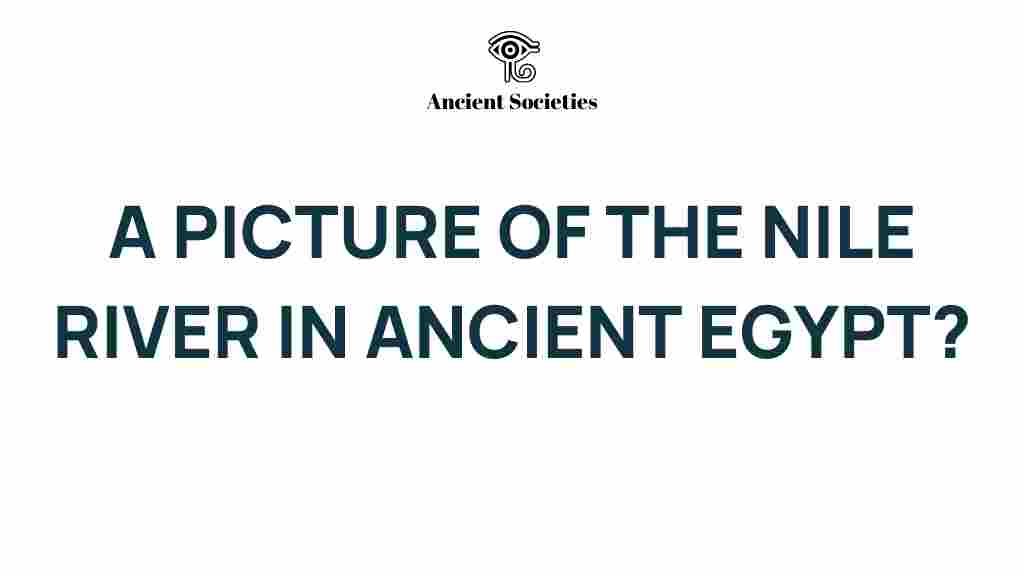Nile River: The Lifeblood of Ancient Egypt
The Nile River, often referred to as the lifeblood of Ancient Egypt, has fascinated historians, archaeologists, and travelers for centuries. Spanning over 4,135 miles, it is the longest river in the world and has played a crucial role in the development of one of history’s most remarkable civilizations. This article explores the multifaceted relationship between the Nile River and Ancient Egypt, delving into its geography, archaeology, culture, mythology, and the artifacts that tell the story of this ancient civilization.
The Geography of the Nile River
The Nile River flows northward through northeastern Africa, eventually emptying into the Mediterranean Sea. Its two major tributaries, the White Nile and the Blue Nile, converge at Khartoum, Sudan. The river’s annual flooding deposited nutrient-rich silt along its banks, creating fertile land in an otherwise arid region. This unique geography made it possible for ancient Egyptian civilization to flourish.
- Source: The White Nile originates from Lake Victoria, while the Blue Nile begins at Lake Tana in Ethiopia.
- Length: The Nile is approximately 4,135 miles long, making it the longest river in the world.
- Importance: The river’s annual flooding cycle enabled agriculture, which was the foundation of Ancient Egyptian society.
The Role of the Nile River in Ancient Egyptian Civilization
Ancient Egypt’s civilization developed along the banks of the Nile, where its waters provided essential resources. The river influenced nearly every aspect of life, from agriculture and trade to religion and architecture.
Agriculture and Economy
The Nile’s inundation was the cornerstone of Ancient Egyptian agriculture. Each year, the river would flood, leaving behind a layer of fertile silt that was ideal for growing crops such as wheat, barley, and flax.
- Crops: The Nile supported the cultivation of staple crops necessary for food and textiles.
- Trade: The river served as a major trade route, facilitating the exchange of goods between Upper and Lower Egypt.
Religion and Mythology
The Nile was not only a physical resource but also held deep spiritual significance. The ancient Egyptians worshipped numerous deities associated with the Nile, believing that its annual floods were a gift from the gods.
- Gods: Hapi, the god of the annual flooding, was revered for providing the fertility of the land.
- Myths: The river was central to many myths, including the creation story, where it was believed that life originated from the waters of the Nile.
Archaeology and the Nile River
Archaeological discoveries along the Nile have provided invaluable insights into Ancient Egyptian civilization. The riverbanks are lined with ancient temples, tombs, and artifacts that reveal the daily lives, beliefs, and practices of the people who lived there.
Notable Archaeological Sites
Some of the most significant archaeological sites along the Nile include:
- The Valley of the Kings: A burial site for pharaohs, containing elaborate tombs and treasures.
- Karnak Temple: One of the largest religious complexes in the world, dedicated to the god Amun.
- Luxor Temple: A stunning temple complex that showcases Ancient Egyptian architecture.
Artifacts Unearthed
Artifacts discovered in and around the Nile River provide a glimpse into the lives of ancient Egyptians. These include:
- Papyrus Scrolls: Ancient texts that contain religious hymns, medical knowledge, and literary works.
- Statues and Statuettes: Representations of deities, pharaohs, and everyday people.
- Pottery and Tools: Everyday items that reveal information about daily life and trade.
Exploration of the Nile River
The exploration of the Nile River has captivated explorers and researchers for centuries. From ancient times to modern expeditions, the river has been a focal point for understanding Ancient Egypt.
Early Explorers
Famous explorers such as Herodotus, the “Father of History,” documented their travels along the Nile, providing rich descriptions of its significance to Egyptian life.
Modern Discoveries
In recent years, advancements in technology have allowed for more in-depth exploration of the river and its surroundings. Techniques such as satellite imagery and ground-penetrating radar have uncovered hidden structures and artifacts.
Mythology and the Nile River
Mythology surrounding the Nile is vast and intricate, influencing art, literature, and religious practices. The river was often personified and featured prominently in numerous myths.
- The Creation Myth: The Nile was thought to be the source of life and fertility, often associated with the god Osiris.
- Seasonal Cycles: The annual flooding of the Nile was seen as a divine cycle of death and rebirth.
Challenges in Studying the Nile River
While the Nile River is a treasure trove for archaeologists and historians, several challenges complicate the study of this ancient waterway.
Environmental Changes
Climate change and human intervention have altered the Nile’s flow, affecting archaeological sites and the surrounding ecosystems.
Political Issues
The river runs through multiple countries, leading to disputes over water rights and management, which can hinder collaborative archaeological efforts.
Conclusion
The Nile River stands as a testament to the ingenuity and resilience of Ancient Egyptian civilization. Through its geography, mythology, and archaeological findings, the river has revealed the complexities of a culture that continues to fascinate the world. By understanding the role of the Nile River in Ancient Egypt, we gain a deeper appreciation for the achievements of this remarkable civilization.
For those interested in exploring more about Ancient Egypt and its treasures, visit this resource. Additionally, you can learn about ongoing archaeological efforts at this site.
As we unravel the mysteries of the Nile, we not only honor the past but also pave the way for future explorations that may further illuminate the wonders of Ancient Egypt.
This article is in the category Archaeology and created by AncientSocieties Team
